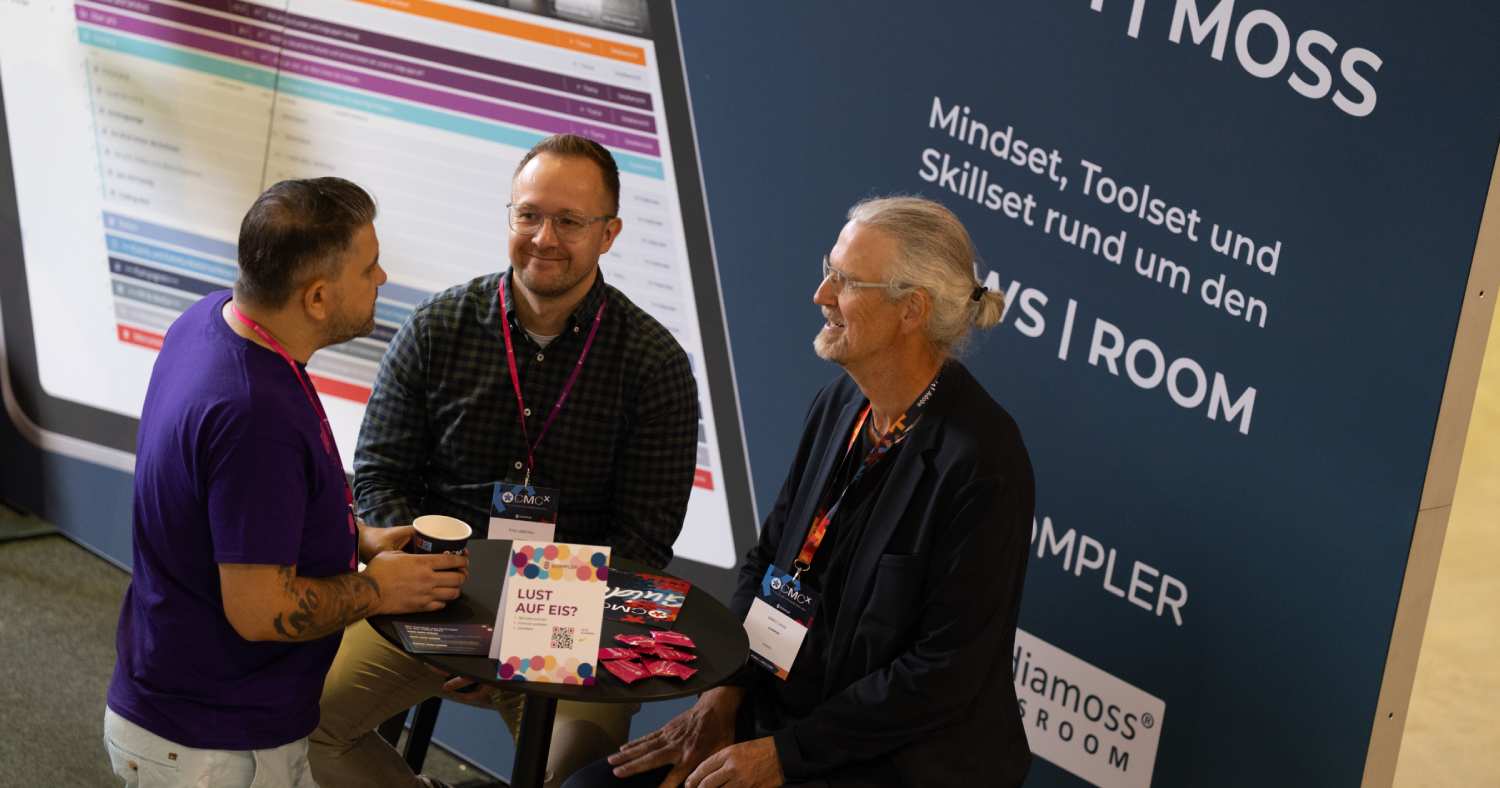Whitepaper, presentation and webinar recording
Seven cardinal mistakes in the corporate newsroom
Hardly any other development has shaped communication and content marketing in recent years as much as the corporate newsroom. However, false expectations and misconceptions about the corporate newsroom often lead to the newsroom not working properly in corporate communications. Scompler-The founder, Mirko Lange, and the inventor of the newsroom model, Prof. Dr. Christoph Moss, have identified a total of seven cardinal errors in their daily consulting practice that contribute to the corporate newsroom not working properly.
In a joint webinar and at the 2023 Communications Congress, they presented these mistakes and provided communicators with valuable recommendations for action. You can download the white paper on the seven cardinal mistakes here download!

Mirko Lange is the founder of Scompler and a consultant and lecturer for content strategy and content marketing. Scompler has been involved in more than 300 newsroom projects.

Prof. Dr. Christoph Moss is Professor of Communication and Marketing. He developed the corporate newsroom model and has advised and implemented it in more than 120 newsrooms with his agency Mediamoss.
Cardinal error
1
"We don't need structures. We are agile."
A newsroom is already agile per se. However, if structures are dispensed with, there is no basis for managing the people who have to implement corporate communications. The implementation of clear newsroom structures often fails because topics and media are not managed separately. Another typical mistake is not having a chief of staff and their coordination function: "It's a big bus and it needs to be managed," says Moss.
Cardinal error
2
"We are too small for a strategy!"
"Small companies generally have very limited resources, which they therefore have to use all the more wisely in order to be successful," emphasizes Mirko Lange. Small corporate communications departments in particular should therefore keep their own company's goals clearly in mind and derive strategy-appropriate communication goals and measures from them in order to be able to contribute to the company's value creation as effectively and resource-efficiently as possible. A strategy is of central importance for a functioning newsroom, as it provides the guidelines for decisions in the day-to-day running of the newsroom.
Cardinal error
3
"We don't plan. We are too dynamic for that."
"Life is what's happening while your making plans". Many newsrooms operate according to this motto. Companies think that they have to react to events as they happen. But this is a mistake. The vast majority of communication can be planned - or prepared - in advance. This not only increases the quality of work but also the quality of life of the experts in the newsroom. Topic planning does not mean being rigid, but rather giving communicators the flexibility they want: "If you know you already have everything in the drawer - metaphorically speaking - then you can be wonderfully flexible and respond to what happens," says Moss.
Cardinal error
4
"Topics are set by the specialist departments"
Most communications departments only see themselves as service providers for the specialist departments. What they specify and want is implemented. However, communicators need to take the lead. An optimal newsroom is organized around key topics and communicates strategically. The topic managers strategically derive these key topics from the corporate goals and obtain suitable topics from the specialist departments themselves. The resulting topic architecture guides the implementation of communication events in everyday working life.
The recording of the webinar

Cardinal error
5
"Google tells us what good topics are"
The two experts recommend a more strategic approach in the form of topic scoring: "When specialist departments arrive with their individual topics, it is important to let the gatekeeper have their say and say 'the topic does not score any points in a topic scoring and does not contribute to our goals and therefore we are not doing it'". This type of scoring enables clear prioritization. This is essential in the newsroom to ensure that only content on topics that contribute to the predefined communication goals is produced and to guarantee the quality of the content.
Cardinal error
6
"We use Excel for project management"
Mirko Lange began developing a strategic editorial plan for Deutsche Bahn in 2012, with the conclusion: "It was the most ingenious editorial plan imaginable. It only had one flaw: it was completely unusable. It was so complex that it was impossible to handle in day-to-day business". What is needed is a holistic content planning tool that breaks down silos and creates full transparency internally about what is communicated and when. The project with Deutsche Bahn was the trigger for the development of Scompler. Today, more than 300 companies use the tool, including seven DAX companies.
Cardinal error
7
"We control with data that is readily available"
The most important goal of corporate communicators should be to bring key topics to the market as effectively as possible and not to generate reach. "That's why it's not enough to just measure reach and channels. We need to measure topics and the impact of topics," emphasizes Moss. It must be possible to trace the data back to the stories, the topics and ultimately also to the company's mission in order to be able to draw clear conclusions about the performance of the content across all channels.
The whitepaper for the webinar
Download the whitepaper directly here and gain in-depth insights into how you can keep your newsroom running successfully.







